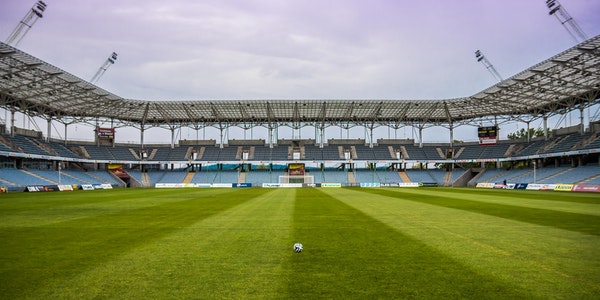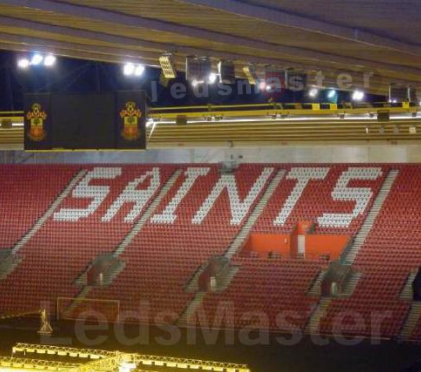I. Introduction
A. Overview of sports lighting and its importance
Sports lighting refers to the artificial illumination used in sports facilities to ensure visibility and enhance performance. It is crucial for several reasons:
Enhancing Player Performance
- Visibility: Proper lighting enables players to see the ball, opponents, and field markings clearly, which is essential for accurate movements and decisions.
- Reduced Eye Strain: High-quality lighting reduces glare and flicker, helping players maintain focus and concentration during games.
Ensuring Safety
- Minimizing Injuries: Good lighting helps players detect potential hazards, reducing the risk of accidents and injuries.
- Emergency Situations: Effective lighting is crucial for safe evacuations and emergency responses, ensuring clear visibility.
Improving Spectator Experience
- Visual Comfort: High-quality lighting improves the viewing experience for spectators in the stadium and for those watching broadcasts.
- Broadcast Quality: Adequate lighting ensures clear and high-quality footage for television broadcasts, enhancing viewer satisfaction.
Economic and Environmental Impact
- Energy Efficiency: Modern lighting technologies like LEDs offer significant energy savings, reducing operational costs for sports facilities.
- Longevity and Maintenance: LED lights have a longer lifespan and require less maintenance, resulting in cost savings and fewer disruptions.
- Environmental Benefits: Energy-efficient lighting solutions help reduce the carbon footprint of sports facilities, supporting environmental sustainability.
In summary, effective sports lighting is essential for enhancing player performance, ensuring safety, improving the spectator experience, and achieving economic and environmental benefits.
B. Introduction to LED technology
LED (Light Emitting Diode) technology represents a significant advancement in lighting, offering numerous benefits over traditional lighting methods. LEDs are semiconductor devices that emit light when an electric current passes through them. This technology has revolutionized various industries, including sports lighting, due to its efficiency, longevity, and versatility.
How LEDs Work
- Semiconductor Material: LEDs are made from a semiconductor material, typically gallium arsenide or gallium phosphide, which emits photons (light) when excited by an electric current.
- Electroluminescence: This process, known as electroluminescence, occurs when electrons in the semiconductor recombine with electron holes, releasing energy in the form of light.
- Color and Brightness Control: The color and brightness of the light emitted can be precisely controlled by adjusting the materials used in the semiconductor and the current passing through the LED.
Advantages of LED Technology
- Energy Efficiency: LEDs consume significantly less energy compared to traditional incandescent or fluorescent lights, making them more cost-effective and environmentally friendly.
- Long Lifespan: LEDs have a much longer operational life, often lasting up to 50,000 hours or more, reducing the need for frequent replacements and maintenance.
- Durability: LEDs are solid-state devices, making them more robust and resistant to shocks, vibrations, and external impacts.
- Environmental Impact: LEDs contain no hazardous materials like mercury, which is found in fluorescent lights, making them safer to use and dispose of.
- Instant Lighting: LEDs provide instant illumination without the warm-up time required by some other lighting technologies, ensuring immediate optimal lighting conditions.
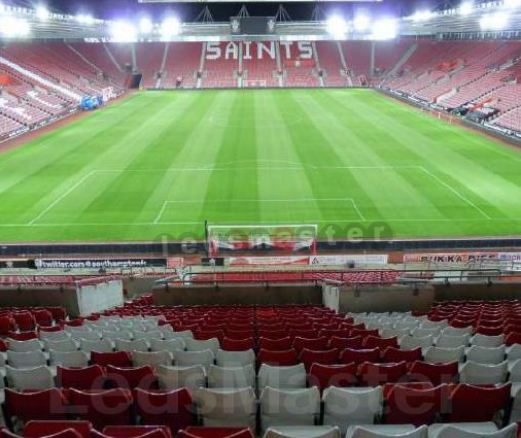
Applications in Sports Lighting
- Enhanced Visibility: LEDs offer better color rendering and uniform light distribution, improving visibility on the field or court.
- Customization and Control: LED systems can be easily programmed for various lighting scenarios, allowing for dynamic adjustments based on specific needs (e.g., different sports, time of day).
- Energy Savings: The efficiency of LEDs leads to significant energy savings, which is especially beneficial for large sports facilities with extensive lighting requirements.
- Reduced Glare and Flicker: Advanced LED systems are designed to minimize glare and flicker, providing a more comfortable visual experience for players and spectators.
In summary, LED technology provides a superior lighting solution for sports facilities by enhancing visibility, reducing energy consumption, and offering greater control and durability. These benefits make LEDs an ideal choice for modern sports lighting applications, contributing to improved player performance, safety, and spectator experience.
C. Purpose of the article:
The purpose of this article is to explore how advancements in LED sports lighting technology enhance player performance and safety. By examining the latest innovations and improvements in LED lighting, the article aims to:
- Highlight the Benefits: Detail the advantages of LED lighting over traditional lighting methods, including energy efficiency, improved light quality, and reduced environmental impact.
- Analyze Impact on Performance: Investigate how better lighting conditions contribute to improved player performance through enhanced visibility, reduced eye strain, and psychological benefits.
- Examine Safety Enhancements: Discuss how advancements in LED lighting reduce the risk of injuries, improve emergency response capabilities, and ensure compliance with safety standards.
- Showcase Real-World Applications: Provide case studies and examples of LED lighting implementations in various sports facilities, illustrating the tangible benefits observed in professional, community, and educational sports settings.
- Explore Future Trends: Identify emerging trends and future innovations in LED sports lighting technology, including integration with smart systems and sustainability initiatives.
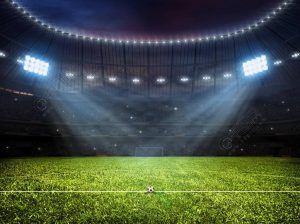
Ultimately, the article aims to provide a comprehensive understanding of how modern LED sports lighting is revolutionizing the sports industry, leading to safer, more efficient, and better-performing environments for athletes and spectators alike.
II. Background on LED Technology
A. Evolution of lighting in sports
(1) Early Beginnings
Natural Lighting: In the earliest days of organized sports, events were held exclusively during daylight hours, relying on natural sunlight for visibility.
Oil Lamps and Gas Lighting: In the late 19th and early 20th centuries, some indoor sports venues used oil lamps and gas lighting, but these were limited in brightness and posed significant fire hazards.
(2) Introduction of Electric Lighting
Incandescent Bulbs: The advent of incandescent lighting in the early 20th century marked a significant advancement. These bulbs provided a reliable source of artificial light, allowing for evening games and indoor sports.
First Night Game: One of the first recorded instances of an outdoor sports event under electric lights was a baseball game in 1880 in Massachusetts.
(3) Fluorescent Lighting
Mid-20th Century: Fluorescent lighting became popular in the mid-20th century for indoor sports facilities. It offered better energy efficiency compared to incandescent bulbs and reduced heat production.
Advantages: Fluorescent lights had a longer lifespan and better color rendering than incandescent lights, but they often flickered and were less effective for large outdoor venues.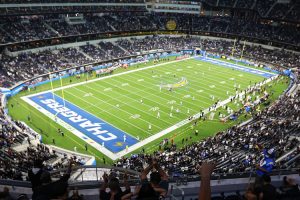
(4) Metal Halide and High-Pressure Sodium Lights
Late 20th Century: The introduction of metal halide and high-pressure sodium lights provided brighter and more focused lighting solutions for large outdoor stadiums and arenas.
Metal Halide: Offered high intensity and good color rendering, making it suitable for sports lighting.
High-Pressure Sodium: Used primarily for outdoor applications due to its high efficiency, although it had poorer color rendering compared to metal halide lights.
(5) Transition to LED Technology
Early 21st Century: The development of LED (Light Emitting Diode) technology revolutionized sports lighting. LEDs offered numerous advantages over traditional lighting methods.
Energy Efficiency: LEDs consume significantly less energy, leading to cost savings and reduced environmental impact.
Longevity: LEDs have a much longer lifespan, reducing maintenance costs and disruptions.
Improved Light Quality: LEDs provide superior color rendering, uniformity, and reduced glare, enhancing visibility and reducing eye strain.
Customization and Control: LED systems can be easily programmed and controlled for different lighting scenarios, adapting to various sports and conditions.
(6) Modern Innovations and Future Trends
Smart Lighting Systems: Integration with smart technologies and IoT (Internet of Things) allows for dynamic lighting adjustments based on real-time data and conditions.
Sensor Technology: Use of sensors for adaptive lighting, improving energy efficiency and player experience.
Remote Control and Monitoring: Advanced systems offer remote control capabilities, enabling precise adjustments and monitoring of lighting conditions.
Sustainability Initiatives: Ongoing improvements in LED technology focus on further reducing energy consumption and enhancing environmental sustainability.
Green Sports Facilities: Many modern sports venues are designed with sustainability in mind, incorporating energy-efficient lighting and other eco-friendly practices.
Conclusion
The evolution of lighting in sports has progressed from basic natural lighting to sophisticated LED systems that enhance player performance, safety, and spectator experience. Each technological advancement has contributed to the development of better-lit, more efficient, and safer sports environments, setting the stage for continued innovation in the future.
B. Basics of LED technology
1. How LEDs work
LEDs, or Light Emitting Diodes, are a type of solid-state lighting that uses semiconductors to convert electrical energy directly into light. Here’s a detailed look at how they work:
- Basic Principles of LEDs
- Semiconductor Material:
LEDs are made from a semiconductor material, typically composed of elements like gallium, arsenic, and phosphorus.
These materials are chosen for their ability to efficiently emit light when electrically energized.
- Diode Structure:
An LED consists of a diode, which is a two-lead semiconductor device.
The diode has a positive side (anode) and a negative side (cathode).
- Electroluminescence:
When an electric current passes through the diode, electrons move through the semiconductor material.
Electrons recombine with electron holes within the material, releasing energy in the form of photons (light).
This process is called electroluminescence.
- Components of an LED
- P-N Junction:
The core of an LED is the p-n junction, formed by joining p-type (positive) and n-type (negative) semiconductor materials.
The p-type material has an abundance of holes (positively charged carriers), while the n-type material has an abundance of electrons (negatively charged carriers).
- Active Region:
The area where the p-type and n-type materials meet is called the active region.
When voltage is applied, electrons from the n-type region move to the p-type region, and holes move in the opposite direction.
The recombination of electrons and holes in the active region emits light.
- Encapsulation:
The semiconductor chip is encapsulated in a clear or diffused epoxy resin, which helps to protect the LED and distribute the light.
- Color and Brightness Control
- Wavelength and Color:
The color of the light emitted by an LED depends on the energy band gap of the semiconductor material used.
By using different materials, LEDs can produce different colors, from infrared to ultraviolet.
- Phosphor Coating:
White LEDs are often created by coating a blue LED with a phosphor material that converts some of the blue light into yellow, resulting in white light.
- Brightness:
The brightness of an LED is determined by the current passing through the diode.
Higher current typically results in greater brightness, but also increased heat, which must be managed to prevent damage.
- Advantages of LEDs
- Energy Efficiency:
LEDs are highly efficient, converting a greater proportion of electrical energy into light compared to traditional incandescent bulbs.
They use less power to produce the same amount of light.
- Longevity:
LEDs have a much longer lifespan, often lasting 25,000 to 50,000 hours or more, compared to incandescent bulbs, which last about 1,000 hours.
- Durability:
LEDs are solid-state devices, making them more robust and resistant to shocks, vibrations, and external impacts.
- Environmental Impact:
LEDs contain no hazardous materials like mercury, which is found in fluorescent lights, making them safer to use and dispose of.
- Instant Lighting:
LEDs provide instant illumination without the warm-up time required by some other lighting technologies, ensuring immediate optimal lighting conditions.
- Applications in Sports Lighting
- Enhanced Visibility:
LEDs offer better color rendering and uniform light distribution, improving visibility on the field or court.
- Customization and Control:
LED systems can be easily programmed for various lighting scenarios, allowing for dynamic adjustments based on specific needs (e.g., different sports, time of day).
- Energy Savings:
The efficiency of LEDs leads to significant energy savings, which is especially beneficial for large sports facilities with extensive lighting requirements.
- Reduced Glare and Flicker:
Advanced LED systems are designed to minimize glare and flicker, providing a more comfortable visual experience for players and spectators.
In summary, LEDs work by using semiconductor materials to convert electrical energy into light through the process of electroluminescence. Their efficiency, longevity, and versatility make them ideal for a wide range of applications, including sports lighting, where they significantly enhance performance and safety.
2. Comparison with traditional lighting (incandescent, fluorescent, etc.)
(I) Incandescent Lighting
(1) Technology:
Mechanism: Incandescent bulbs generate light by heating a tungsten filament until it glows.
Efficiency: Very low efficiency; only about 10% of the energy is converted into light, with the remaining 90% lost as heat.
Lifespan: Short lifespan, typically around 1,000 hours.
(2) Advantages:
Initial Cost: Low upfront cost.
Light Quality: Emits a warm light with good color rendering.
- Disadvantages:
Energy Consumption: High energy consumption due to inefficiency.
Heat Production: Generates a significant amount of heat, which can be a safety hazard and contribute to higher cooling costs.
(To Be Continued)

